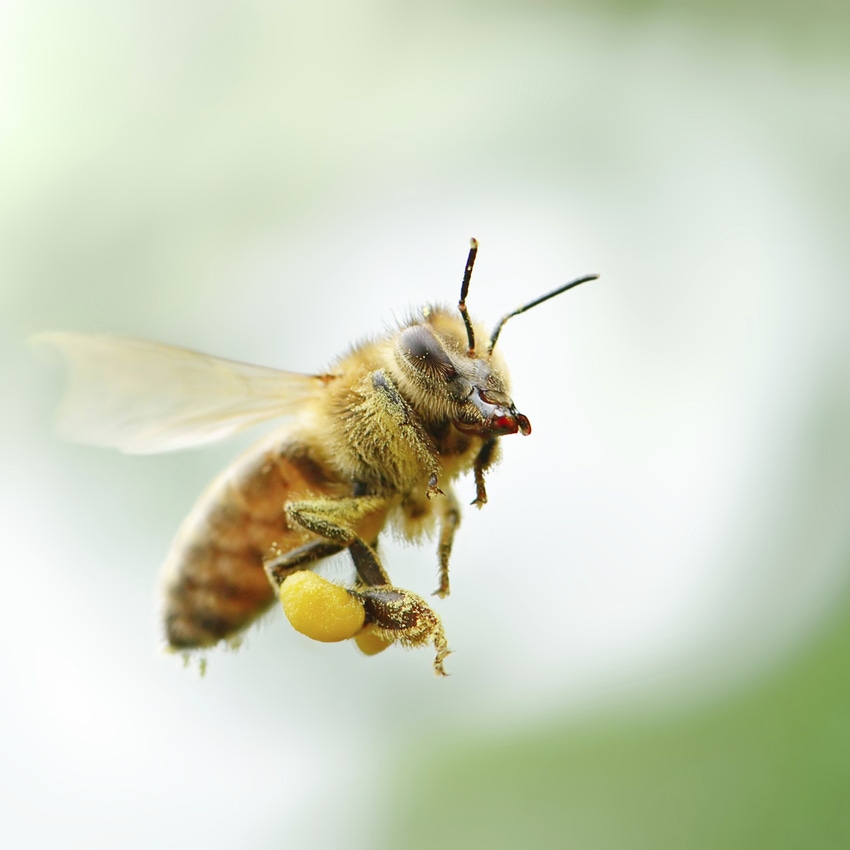Deformed wing virus - a leading cause of honeybee losses - more genetically diverse than previously thought.
October 24, 2019

Deformed wing virus (DWV), one of the leading causes of honeybee colony losses, is much more genetically diverse in the U.S. than previously thought, according to a study published by Agricultural Research Service (ARS) scientists in PLoS Biology.
ARS said the diverse lineages of this virus are all equally bad for bees, and they make it more complicated to develop antiviral therapeutics, which could be the basis for developing a vaccine for the virus.
The high level of genetic diversity was found among the virus population within individual honeybees as well as within bee colonies. About 9% of nucleotides in the RNA of DWV have polymorphic variants (places in the genetic sequence with natural alternatives) that are present at numbers higher than half of 1% of the virus population, ARS reported. This corresponds to 100 million to 1 billion virus copies for any single divergent genetic position in an infected individual bee.
"We found the genetic makeup of DWV in the United States is showing marked expansion in diversity after going through a strong bottleneck event -- probably the arrival in the United States of the Varroa mite in the 1980s. Varroa seems to cause a dramatic loss of DWV genetic diversity in honeybees, because transmission by the mites favors a few more virulent strains," said virologist Eugene Ryabov, an international fellow with the ARS Bee Research Laboratory who led the study. ARS researchers Jay Evans and Judy Chen also worked on this study.
"Differences in the genetic sequence of virus highlight the importance of analyzing DWV in different locations in the United States and in other countries so we will be able to track how the virus evolves," Ryabov said.
This study employed a new reverse-genetics system for the first time that makes it possible to assess the virulence of U.S. DWV populations, ARS said. This required making a series of cloned DNA copies of RNA variants in DWV. This virus naturally has only RNA, which allows more copies of each variant to be made. By infecting honeybees with these cloned DWV variants individually or in combinations under laboratory conditions, the researchers could track which variants are virulent.
The discovery of these high levels of genetic diversity indicates that the job of developing new treatments or a vaccine targeting DWV is going to be much harder than scientists previously thought, ARS said.
With a divergent virus population such as with DWV in the U.S., variants are likely to be present in the population already that have the potential to not be affected by any genetic sequence-specific treatments, the researchers said. What was a minor fraction of the virus population could then quickly become predominant once the targeted variants are eliminated, they added.
"For now, the best thing that beekeepers can do to cut the amount of damage from DWV is to limit virus levels by treating for and reducing exposure to Varroa mites, which spread the virus," Ryabov said.
Source: U.S. Department of Agriculture Agricultural Research Service, which is solely responsible for the information provided and is wholly owned by the source. Informa Business Media and all its subsidiaries are not responsible for any of the content contained in this information asset.
You May Also Like


.png?width=300&auto=webp&quality=80&disable=upscale)
